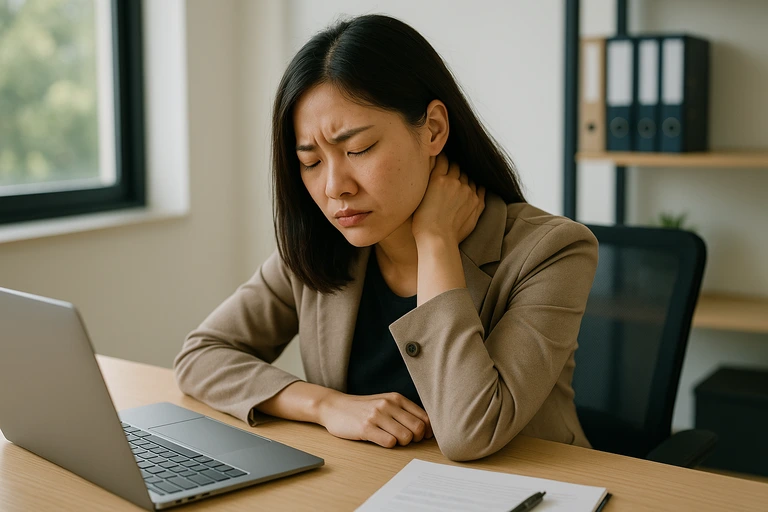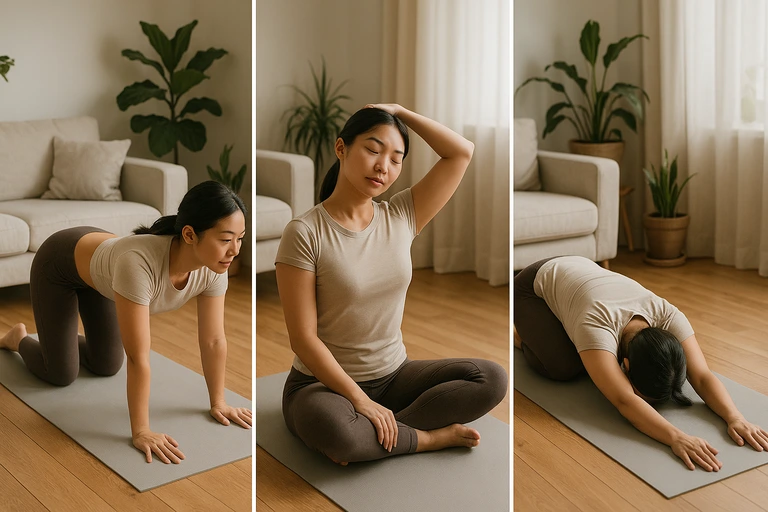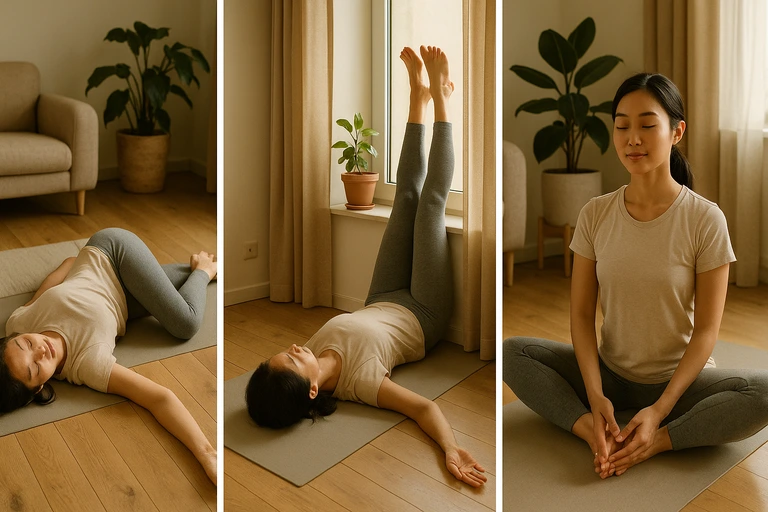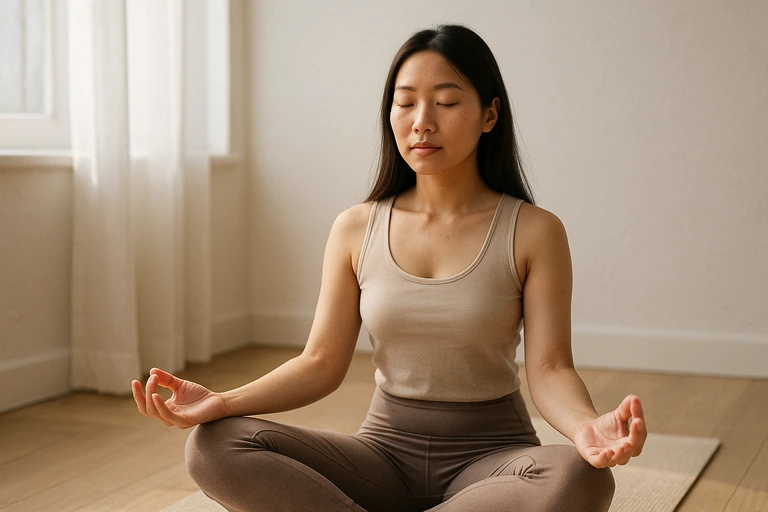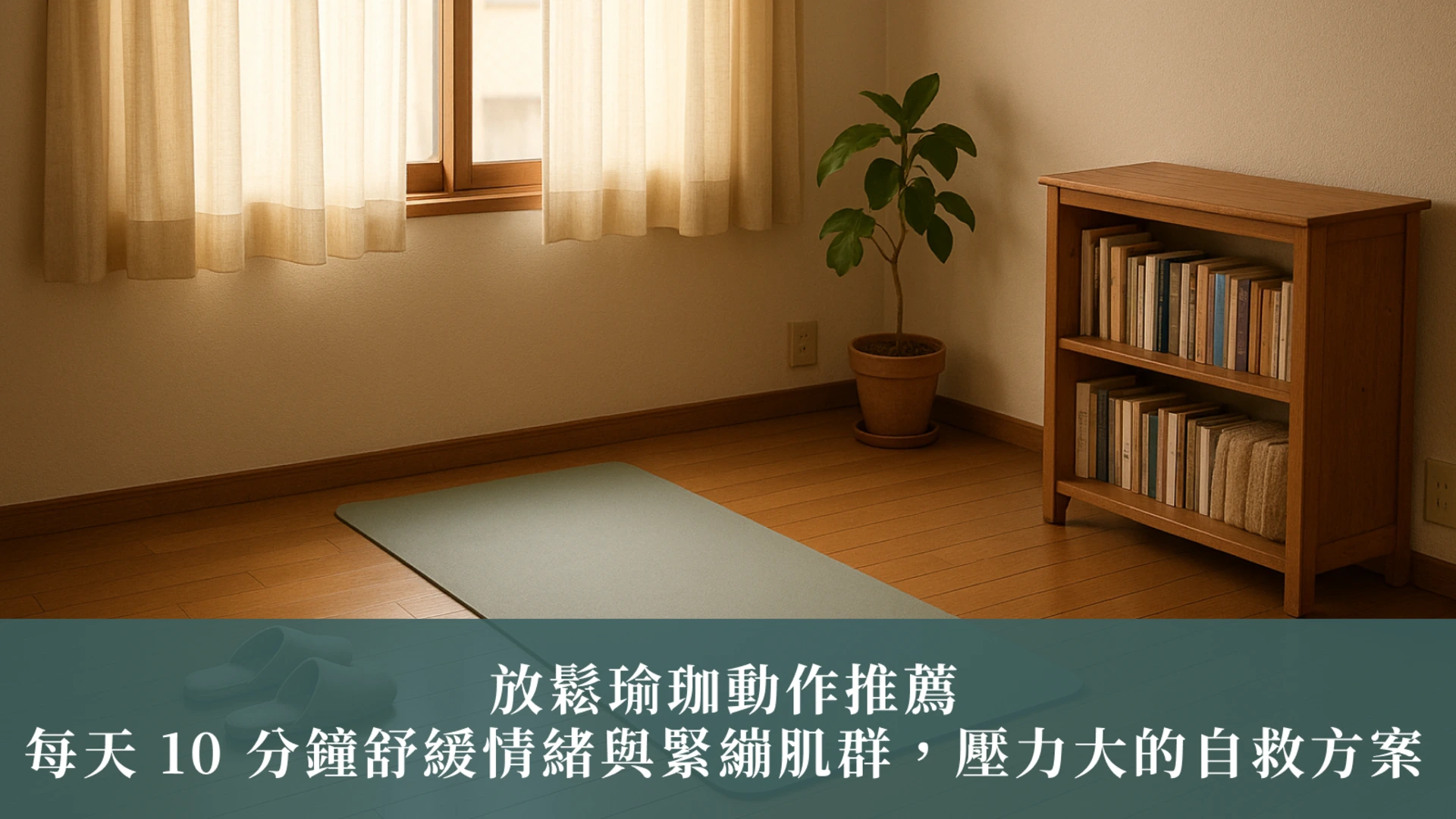
Relaxation yoga in 10 minutes: ease emotions, release tension, and reset your body with this daily.
Relaxation yoga is not just a trend, but a practical practice that gives life an outlet. From stiff shoulders and necks to tight pelvises, from fatigue to emotional fluctuations, this article teaches you how to complete a set of daily movements that can "relax your body and calm your emotions" in 10 minutes. You don't need to be highly flexible, as long as you are willing to stop, you will find that true relaxation can change the language of the body more than exertion.
💡 A quick summary of the key points of this article:
- How to do relaxation yoga? A complete relaxation proposal from movements to breathing
- Recommended exercises for tight parts of the body
- Meditation breathing exercises for beginners
Common tension problems among office workers and students who sit for long periods of time: You are not lazy, your body has no outlet
When the body feels heavy and lazy, many people will subconsciously blame themselves for "lack of perseverance". But the fact is that if you maintain the same sitting posture all day and your brain keeps running at high speed, your body will already be in a protective tight state: your shoulders and neck are suspended, your waist and back are arched, and your pelvis is tilted backwards... That's not laziness, but the body is sending a signal that "I can't hold on any longer".
Office workers are most likely to have stiff shoulders, necks and backs. Long hours of mouse operation and typing cause the shoulders to retract and the chest to compress, further causing shortness of breath; students are more likely to suffer from pelvic tilt and lower back pain due to long periods of sitting, which in turn affects sleep quality and concentration. These physical problems often lead to emotional tension and internal stress.
The value of relaxation yoga is not to burn calories, but to "make room" for the body through simple and steady movements. When muscles are gradually released, emotions will have room to flow. There is no need to force yourself to work harder, just give yourself a chance to relax, that is the beginning of care.
Recommended yoga movements for upper body relaxation: How to stretch the shoulders, neck, back and arms effectively?
Sitting at a desk for a long time is most likely to cause chronic pain in the upper body. If the shoulders are stuck, the chest is tight, and the back is stiff, without proper guidance, every deep breath will feel laborious. Here are three sets of recommended movements that are suitable for quiet completion indoors or on a yoga mat. They do not require high flexibility and can effectively "open up space and release pressure."
🧩 Relaxation Yoga Recommended Action 1: Cat-Cow
Dynamic spinal stretching can help relax the back and awaken the spinal mobility. Perform with breathing, inhale to raise your head and expand your chest, exhale to arch your back and tighten your abdomen. It is suitable as a gentle exercise at the beginning or end of the day.
🧩 Relaxation Yoga Recommended Action 2: Seated Neck Stretch
After the sitting position is stable, slowly tilt the head to one side, and use the opposite hand to gently press the side of the head to deepen the stretching feeling. The intensity can be adjusted according to the individual's tightness to help release the tension in the trapezius muscle and the side of the neck.
🧩Recommended relaxation yoga action three: Balasana Variation
Extend your hands forward from the child's pose, allowing your arms to rest completely on the ground and open up the space between your armpits and shoulder blades. This is especially useful for relieving arm tension and chest tightness caused by long hours of typing.
These three sets of movements may seem simple, but they can effectively wake up the parts that are overused in daily life. Practice slowly, and you will find that pain is not an enemy, but a reminder that invites you to stop.
Lower body relaxation focus: Three ways to release pelvic stiffness and leg pressure
Many lower body discomforts actually come from stiffness around the pelvis and imbalanced muscles. Sitting for long periods of time can make the hip muscles sluggish, which in turn affects the circulation of the lumbar spine and legs. Through conscious yoga relaxation movements for the lower body, the pelvis can be opened, the legs can be softened, and the discomfort after sitting for a long time can be reduced.
🧩Recommended relaxation yoga action 1: Supine Twist
After lying flat, cross one knee across the body and twist, open your hands and put your shoulders on the ground. This movement can relax the waist and iliopsoas muscles, while gently adjusting the spine and pelvis. It is suitable for bedtime and can also help relieve stress-induced abdominal tension.
🧩 Relaxation Yoga Recommended Action 2: Legs-Up-the-Wall
Lift your legs against the wall and place your buttocks against the wall. This is a classic static recovery posture that helps blood flow back to the legs and relieves edema and fatigue. Combined with deep breathing, it can enhance the overall relaxation effect.
🧩 Relaxation Yoga Recommended Action 3: Butterfly Pose (Bound Angle Pose)
Sit with your feet facing each other and your knees naturally open. You can use your hands to support your feet and stretch your spine, or bend forward to strengthen the stretch. This action opens the pelvis and inner leg muscles, and has a good soothing effect on pelvic stiffness caused by sitting for a long time.
These three sets of movements do not pursue extreme angles, but rather allow the body to slowly relax itself through "staying". Stopping at a position where the body can breathe is deeper and safer than pulling hard.
How to combine yoga meditation and breathing techniques? Relaxation is not just a movement, but also an exercise to restore your emotions
When practicing yoga, many people tend to focus only on the completion of the movements, but ignore that "breathing" itself is the most direct relaxation tool. Especially when you are anxious, tired, or emotionally confused, the introduction of meditation and breathing exercises can open up the body from the inside and enter a stable rhythm more effectively.
Breathing is the first place where the body sends out signals. Shallow, rapid chest breathing often comes from accumulated stress or unresolved anxiety. Through abdominal breathing or three-stage breathing (inhale-hold-exhale), the nervous system can slowly switch to the parasympathetic mode, creating a sense of security for the body that "it's time to rest."
Meditation practice does not require complicated rituals. Sit quietly for 3-5 minutes, close your eyes, and focus on the transition point between inhalation and exhalation, and you can start to build an inner space of awareness. If combined with yoga movements such as "legs against the wall" or "baby pose", the body and mind will enter a state of relaxation at the same time, and they will no longer conflict with each other, but become a rhythm that supports each other.
Relaxation is never just about stretching or stretching, but a process that allows you to "feel yourself" again. When your breathing becomes deeper and your emotions slow down, your body will find its own rhythm.
Ten minutes a day, let you talk to your body again
Relaxation yoga is not about doing a lot at once, but about being willing to give yourself a little space every day. From stretching, breathing to meditation, each practice does not need to be perfect. The key is to help you feel the flow of your body and the space of your emotions again. Instead of waiting for the pressure to accumulate to the point where you can't bear it anymore, start today and practice loosening up a little bit in your daily life. This is the starting point of repair.
